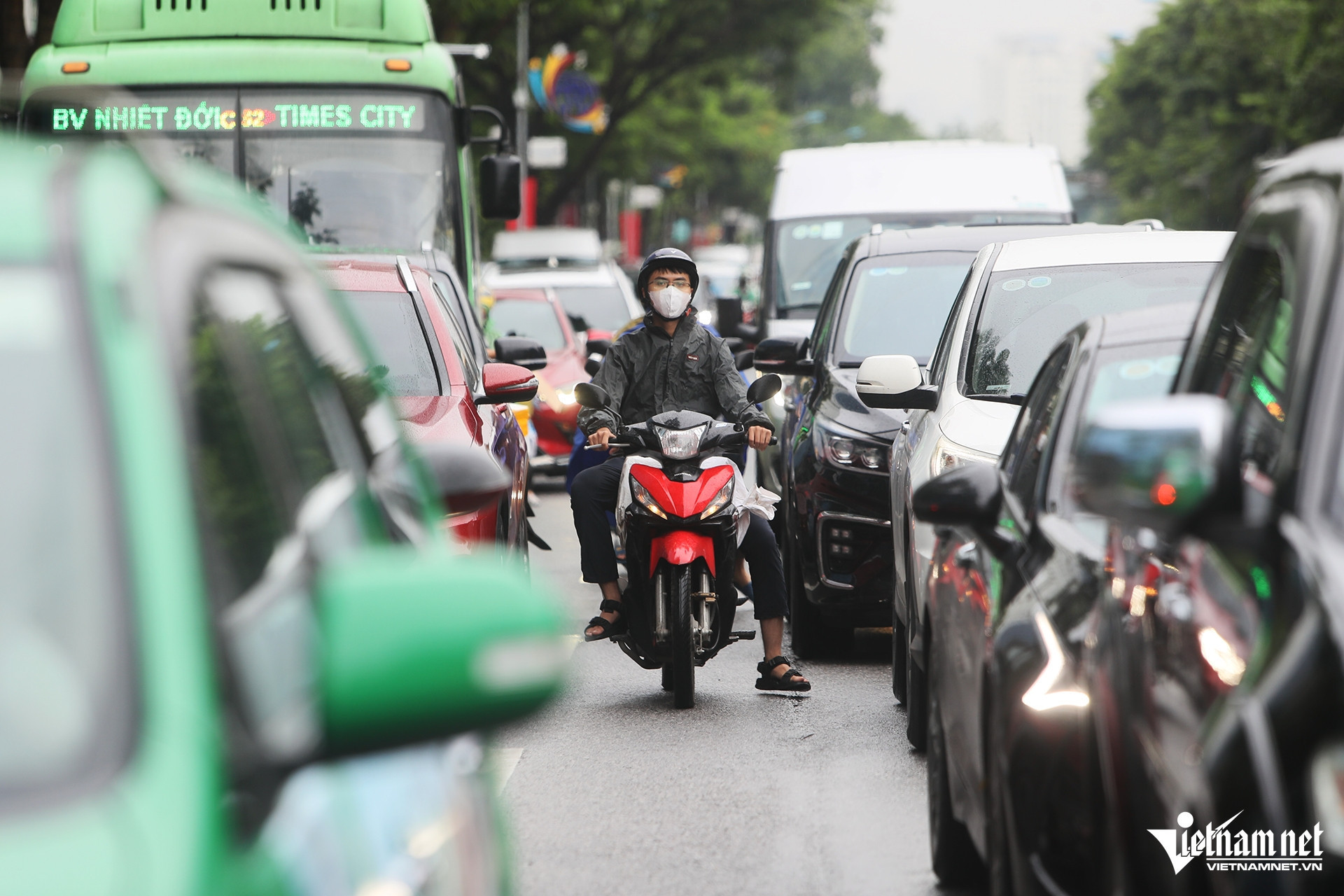
In recent days, the phrase "green transportation" has been frequently repeated. Beyond a slogan, this orientation has become a political mandate formalized through Directive 20 by Prime Minister Pham Minh Chinh.
The directive outlines a roadmap, tasks, and responsibilities for ministries, branches, and localities in environmental protection, emphasizing the critical role of reforming the transportation system, particularly in major cities like Hanoi.
Hanoi has set a timeline: by July 1, 2026, no fossil-fuel motorcycles will be allowed within Ring Road 1; by January 1, 2028, no fossil-fuel motorcycles and restricted personal cars will operate within Ring Roads 1 and 2; and from 2030, this will extend to Ring Road 3.
Hanoi and other cities are witnessing worsening air pollution, wastewater, and solid waste, directly impacting residents’ quality of life and urban sustainability. Fine dust measurements in Hanoi often exceed recommended levels, posing a major threat to public health.
Thus, Hanoi Vice Mayor Duong Duc Tuan said Directive 20 must not be delayed. “We must unite to protect the living environment, especially the health of Hanoi residents,” he said.
Hanoi prioritizes transport for prompt action. A key focus of Directive 20 is targeting fossil-fuel personal vehicles for transition. The city will study suitable policies to support the transition of vehicles, especially for Ring Road 1.
International practice
Hoang Duong Tung, Chair of the Vietnam Clean Air Network, noted that Directive 20 reflects the government’s resolute and coordinated approach.
Tung cited the experience of Beijing, known as the “smog capital of the world” in early 2000 with over 2.6 million air pollution-related deaths in 2005, according to The Guardian (a UK daily). He said that switching public transport to electric vehicles can significantly improve air quality within a few years.
“They acted decisively, starting from the core area and expanding outward. Support policies were transparent, publicized, and swiftly implemented, including on digital platforms. This is what we should learn from,” Tung said.
Besides Beijing, Bangkok and Jakarta are also pursuing similar policies, offering valuable lessons. Vietnam needs to encourage and enforce phased restrictions while investing heavily in charging infrastructure, public transport, and financial incentives for transitioning.
Hanoi’s People’s Committee plans to implement policies by zone: starting with Ring Road 1, expanding to Ring Road 2, and covering the entire city from 2026 to 2030. Hanoi also calls on electric vehicle manufacturers to assist residents with trade-ins and price reductions.
The city plans incentives for green vehicle buyers, including price discounts, reduced registration fees, and support for infrastructure.
Hoang Van Thuc, Director of the Environment Department under the Ministry of Agriculture and Environment, said Directive 20 assigns critical tasks to ministries and sectors.
“With Hanoi’s average fine dust level at 47 µg/sq m, we must reduce it by 20 percent in five years. This requires immense determination from all levels, sectors, and the community, alongside multiple solutions,” Thuc said.
No way back
Tung argued that Vietnam should not continue the debate over whether motorcycles are the main pollution cause.
“It’s not the time to question if motorcycles are the primary polluters. We need highly decisive measures like Directive 20. I’m encouraged that Hanoi has acted swiftly, establishing an advisory and steering board to implement the directive. Such measures are timely,” he said.
Many experts agree that green transport is not just an environmental obligation but part of a modern, smart, globally integrated urban development strategy. Electric vehicles and clean, comfortable public transport will become the new standards for civilized cities, which Hanoi cannot ignore.
In current conditions, issuing transparent support policies early is key to success. These must include financial support (subsidies for electric vehicles, fee exemptions), technical support (charging and maintenance networks), and communication (promoting behavioral change).
International experience shows that transparent, accessible information leads to strong public support. Thus, using digital platforms like apps and public service portals to guide residents during the transition is essential.
Green transportation is no longer optional but a path to protect the living environment. This aligns with the National Development Orientation for 2021-2030, as stated in the 13th Party Congress Resolution “Proactively adapt to climate change, prevent and mitigate natural disasters and diseases, manage and use resources sustainably; prioritize protecting the living environment and public health; firmly eliminate polluting projects, ensure environmental quality, protect biodiversity and ecosystems; build a green, circular, environmentally friendly economy”.
Vu Diep